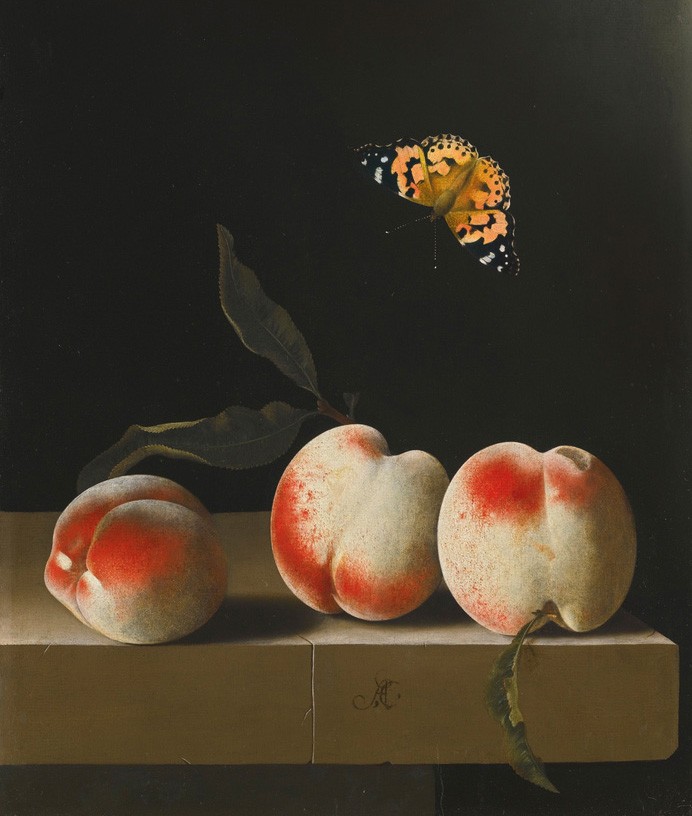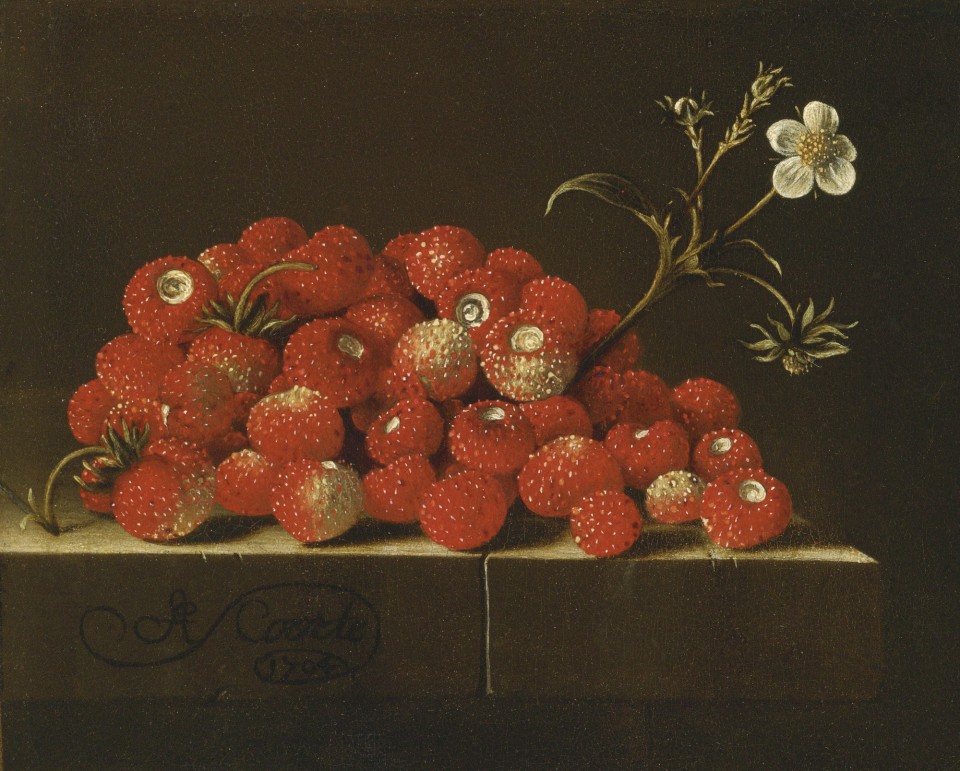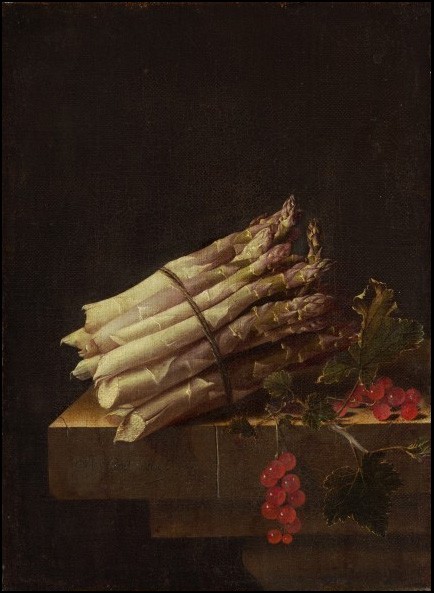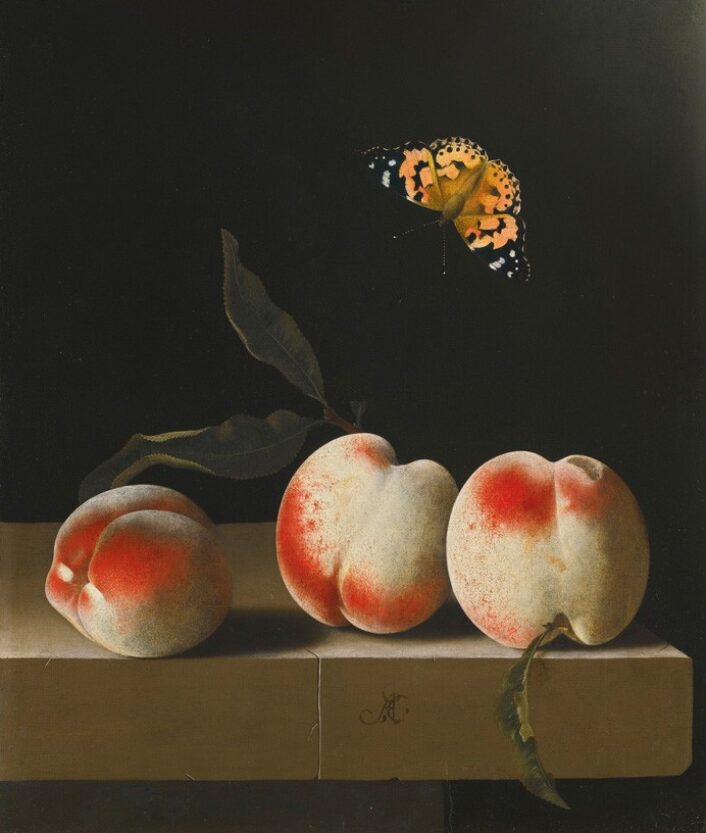
Adriaen Coorte (Dutch, 1660-1707), Three Peaches on a Stone Ledge, with a Red Admiral Butterfly, date unconfirmed
Image courtesy: Sotheby’s
“Coorte’s work has an appeal that is more timeless than other paintings from the period, which tend to be more rigid and deeper in their cultural traditions”, according to George Gordon, Sotheby’s co-chairman of Old Master paintings and drawings. Indeed, we are drawn to the simplicity of subject, an almost timeless feeling evoked by the very special artist, Adriaen Coorte. In fact, the butterfly in “Peaches”, a favorite (and recent auction sensation), is said to evoke an absolute stillness that we find simply beautiful.
Mr. Coorte has recently come into the spotlight, and we currently see upward trend his market as a late 18th century Dutch still life painter. Notably:
- We know very little about him. Coorte’s life is marked by its relative isolation. He seems to have been active between 1683 and 1705, and his known work consists today of sixty four paintings (or, of 100 paintings 1683-1707 according to the National Gallery exhibition text from 2003). His mature works do not show the obvious influence of other artists, and in their turn they do not seem to have exerted any influence upon anybody else.
- His technique was unique. From the mid-1690s onwards, many of Coorte’s paintings were painted on paper laid down on canvas or on panel. It is possible that Coorte drew his basic design on paper first, and then worked in oils on top of this. The technique is highly unusual in either the seventeenth or the eighteenth centuries.
- His style is distinct and viewed as modern. Coorte’s still life paintings are highly distinctive. In his simple designs, natural objects sit upon stone ledges against a dark background. His subject matter is restricted to limited themes: asparagus, wild strawberries, fruit, including peaches, medlars, apricots, black and redcurrants, cherries, gooseberries and grapes, nuts and shells. Their combinations were very probably determined by their seasonal availability, and are occasionally accompanied by a delicate butterfly.
Enjoy some of our favorites by Adriaen Coorte.

Adriaen Coorte (Dutch, 1660-1707), Wild Strawberries on a Ledge, 1704
Image courtesy: Sotheby’s

Adriaen Coorte (Dutch, 1660-1707), Still Life with Asparagus and Red Currants, 1696
Image courtesy: The National Gallery of Art
